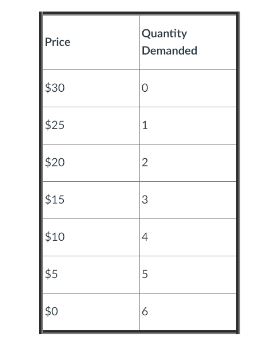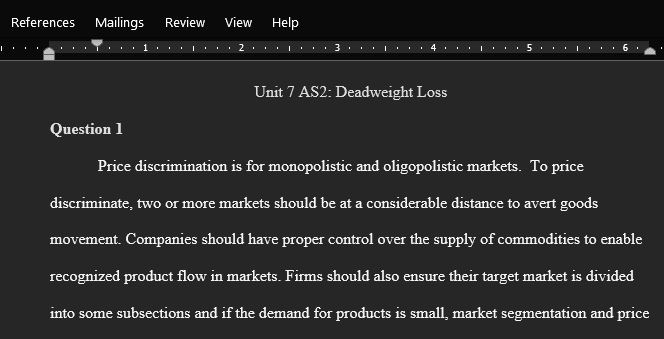Unit 7 AS2 Deadweight Loss
- What are the key conditions that must be present for a firm to successfully price discriminate? What are two different examples of price discrimination being practiced today?
- What is a two-part tariff? Why do firms sometimes use them? What is an example of a firm that uses a two-part tariff as part of its pricing strategy?
- George has a monopoly on burrito sales in a small town in Kansas. The burritos cost him a constant $5 each to produce. He faces the following demand schedule for his product:
- Under normal monopoly conditions, how many burritos should he produce, what price should he charge, and how much profit can he expect to make?
- Draw a graph under these assumptions showing (and calculating) producer surplus, consumer surplus, economic surplus and deadweight loss.
- If George was able to engage in perfect price discrimination, how many burritos would he produce, what would his total revenue be, and how much profit would he earn?
- Draw a graph under these assumptions showing (and calculating) producer surplus, consumer surplus, economic surplus and deadweight loss.
- Is society better off by allowing George to perfectly price discriminate? Defend your answer.
Answer Preview For Unit 7 AS2 Deadweight Loss
Access the full answer containing 644 words by clicking the below purchase button


